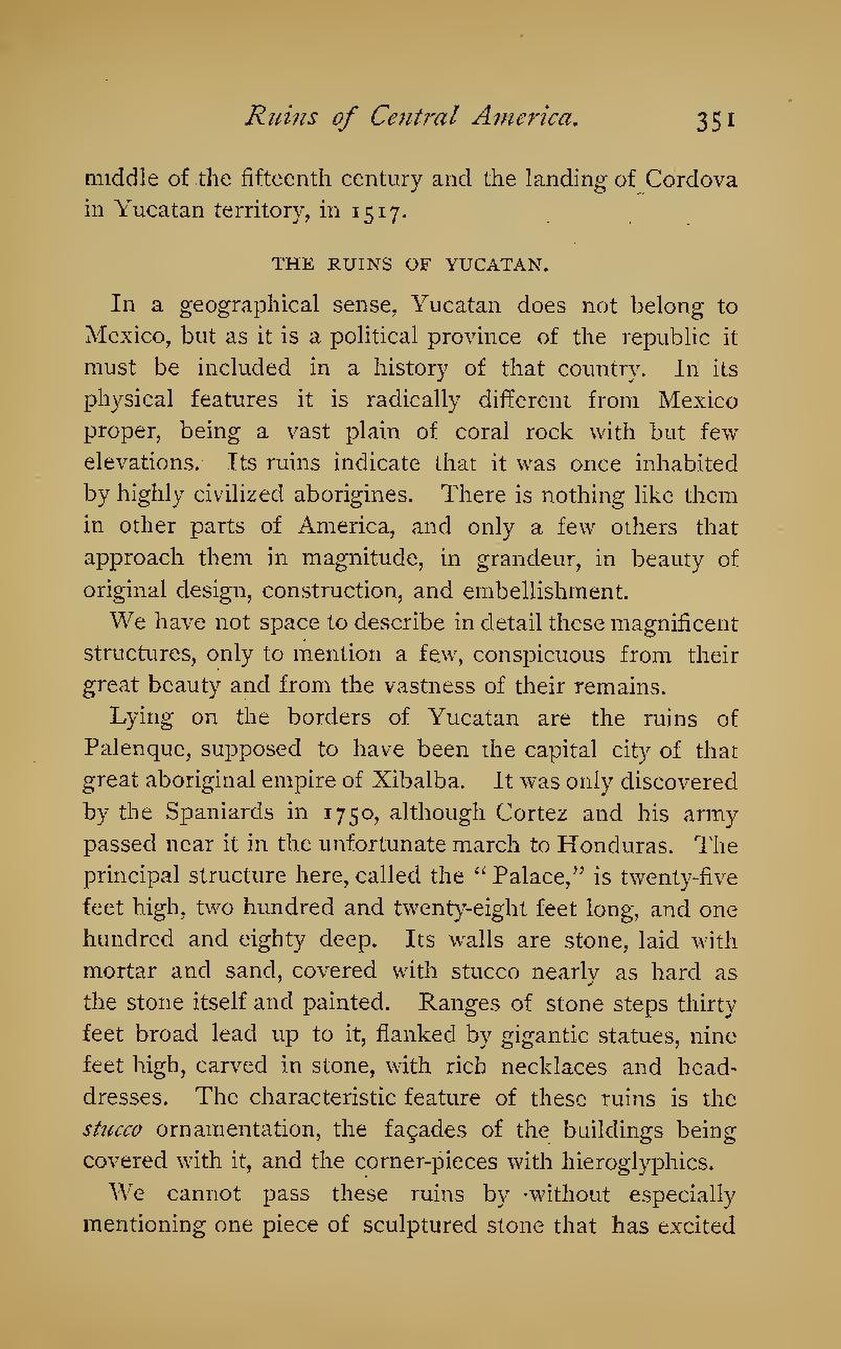middle of the fifteenth century and the landing of Cordova in Yucatan territory, in 1517.
THE RUINS OF YUCATAN.
In a geographical sense, Yucatan does not belong to Mexico, but as it is a political province of the republic it must be included in a history of that country. In its physical features it is radically different from Mexico proper, being a vast plain of coral rock with but few elevations. Its ruins indicate that it was once inhabited by highly civilized aborigines. There is nothing like them in other parts of America, and only a few others that approach them in magnitude, in grandeur, in beauty of original design, construction, and embellishment.
We have not space to describe in detail these magnificent structures, only to mention a few, conspicuous from their great beauty and from the vastness of their remains.
Lying on the borders of Yucatan are the ruins of Palenque, supposed to have been the capital city of that great aboriginal empire of Xibalba. It was only discovered by the Spaniards in 1750, although Cortez and his army passed near it in the unfortunate march to Honduras. The principal structure here, called the "Palace," is twenty-five feet high, two hundred and twenty-eight feet long, and one hundred and eighty deep. Its walls are stone, laid with mortar and sand, covered with stucco nearly as hard as the stone itself and painted. Ranges of stone steps thirty feet broad lead up to it, flanked by gigantic statues, nine feet high, carved in stone, with rich necklaces and headdresses. The characteristic feature of these ruins is the stucco ornamentation, the facades of the buildings being covered with it, and the corner-pieces with hieroglyphics.
We cannot pass these ruins by without especially mentioning one piece of sculptured stone that has excited
